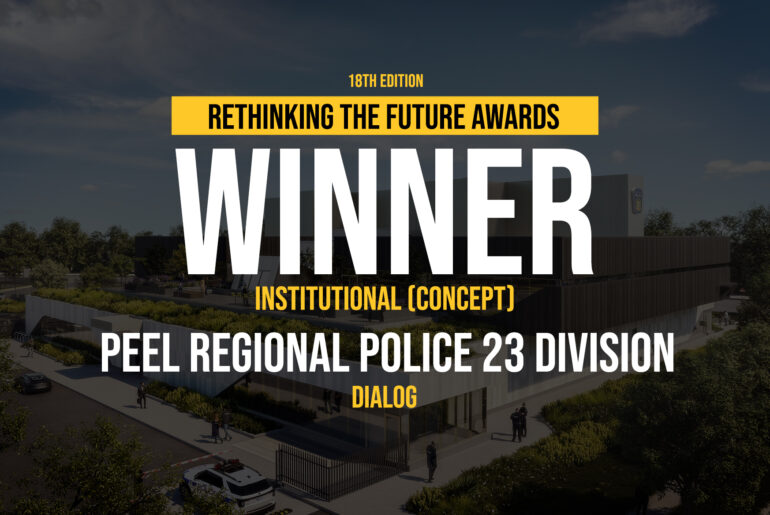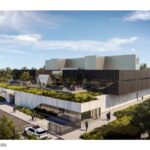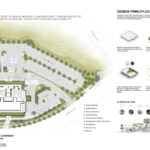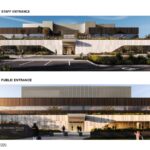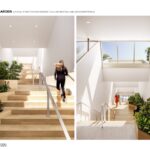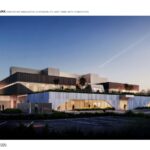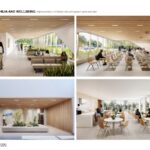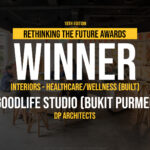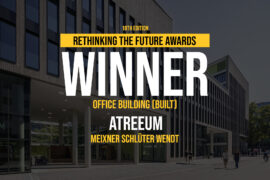Peel Regional Police’s 23 Division ushers in a new model for public safety infrastructure—one that is sustainable, inclusive, and deeply rooted in community connection.
Rethinking The Future Awards 2025
First Award | Institutional (Concept)
Project Name: Peel Regional Police 23 Division
Category: Institutional (Concept)
Studio Name: DIALOG
Design Team: Anthony Fieldman, Juan Carlos Portuese, Chen Cohen
Area: 64,100 sq ft
Year: 2026
Location: Brampton, Ontario. Canada
Consultants:
Architect – DIALOG
Interior Design – DIALOG
Landscape Architect – DIALOG
Structural Engineering – DIALOG
Mechanical Engineering – DIALOG
Electrical Engineering – DIALOG
Civil/Transportation – TYLin Engineers Inc.
Sustainable Design – DIALOG
Security – LOBO Security Consulting
IT & AV – SpecTech
Code Consultant – Vortex Fire Consulting Inc.
Elevator – Soberman Engineering Inc.
Solar PV – ZON Engineering Inc.
Photography Credits: N/A
Render Credits: Artificiel
Other Credits: N/A

Located at the northwest corner of Lagerfeld Drive and Mississauga Road in Brampton, this forward-thinking facility is designed not only to serve the evolving needs of the region, but also to achieve the highest level of environmental performance in Ontario by targeting Zero Carbon Building Certification. This bold commitment positions 23 Division as one of the most sustainable police facilities in the province, setting the standard for civic leadership in climate-conscious design.
As the largest division in Peel Regional Police’s history, 23 Division will house specialised units including Uniform Patrol, the Criminal Investigation Bureau, the Community Intervention and Response Team (CIRT), Bike Patrol, and a dedicated Accident Reporting Centre. The facility is carefully organized to balance operational efficiency, public accessibility, and officer well-being—promoting collaboration and a seamless flow between its various functions.
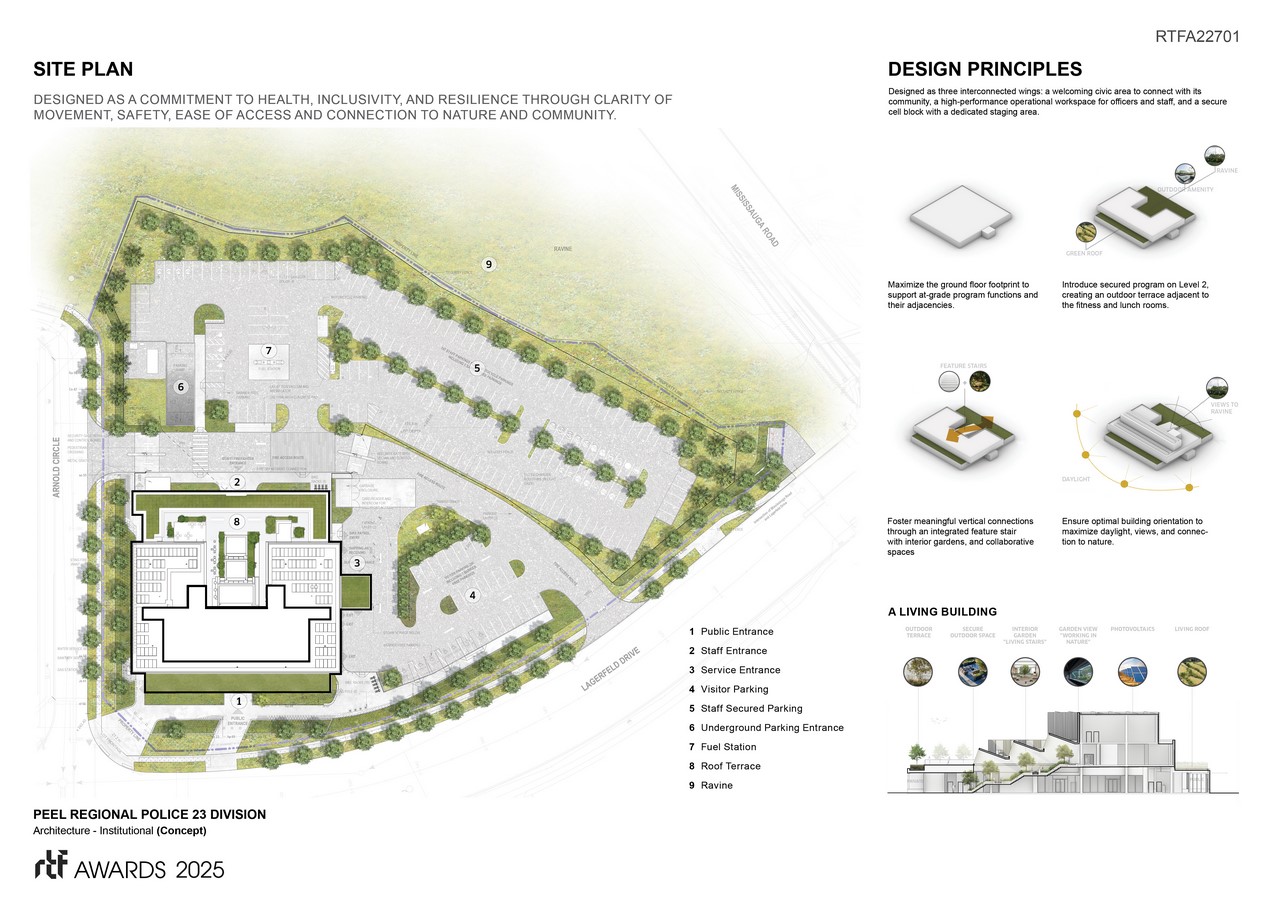
The architectural vision is structured around three distinct yet interconnected wings: a civic area that welcomes and engages the public; a high-performance operational workspace for officers and staff; and a secure zone comprising a cell block and dedicated staging areas. This deliberate zoning strategy supports safety, clarity of movement, and meaningful connection between the police and the community they serve.
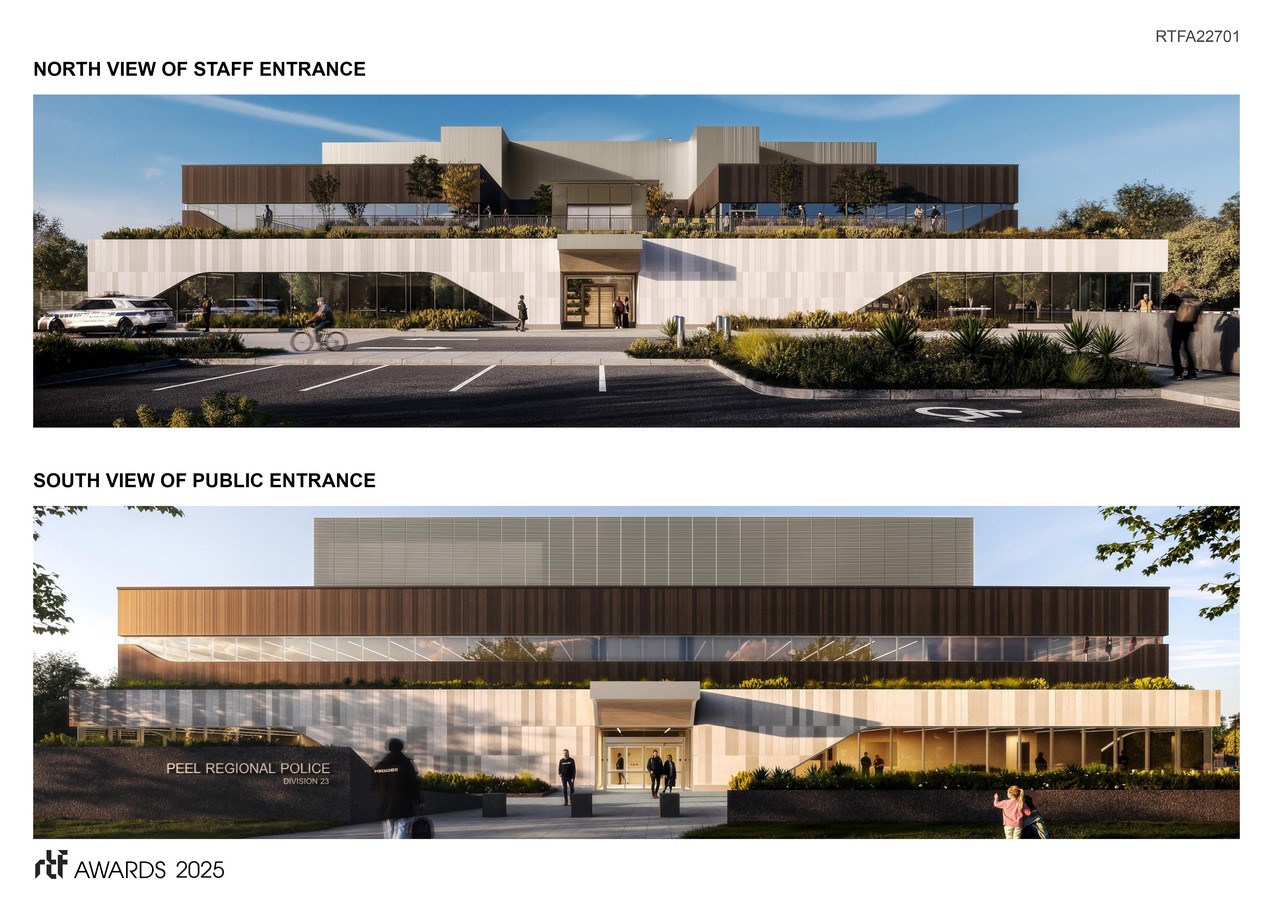
A strong emphasis on wellness, inclusivity, and resilience is embedded throughout the design. A central, day-lit garden and open feature stair promote visibility, collaboration, and decompression. Generous glazing and open interior layouts flood the building with natural light, creating uplifting, low-stress environments for both staff and visitors. Universal accessibility features include all-gender washrooms, universal locker rooms, a prayer room with ablution, lactation spaces, and quiet rooms for reflection and rest. Natural materials and warm finishes enhance comfort and support a restorative atmosphere.
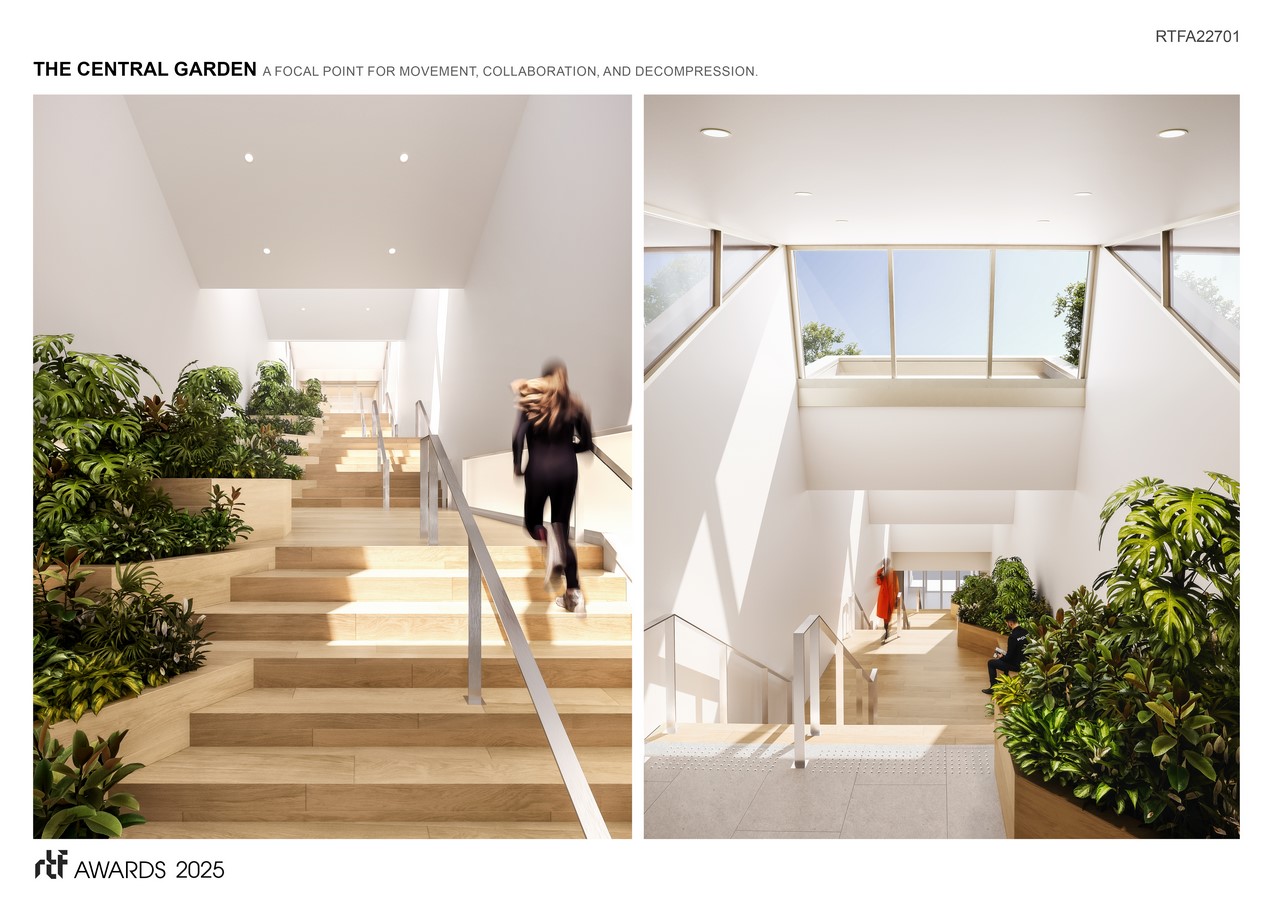
The building’s deep connection to nature is reinforced through biophilic design strategies, including outdoor gathering areas, green roof elements, and views of the adjacent ravine. These elements enhance mental and physical well-being, providing opportunities for rest, conversation, and community interaction. Sustainability is not an afterthought—it is a driving force. The building integrates high-efficiency mechanical systems, a living roof, and photovoltaic panels to drastically reduce its carbon footprint. Its pursuit of Zero Carbon Building Certification demonstrates Peel Region’s leadership in climate action and long-term resilience.
More than just a facility for policing, 23 Division is a civic landmark that redefines the role of public safety infrastructure. It welcomes its community, supports its officers, and protects the environment. It is a place where trust is built, service is strengthened, and innovation is made visible.
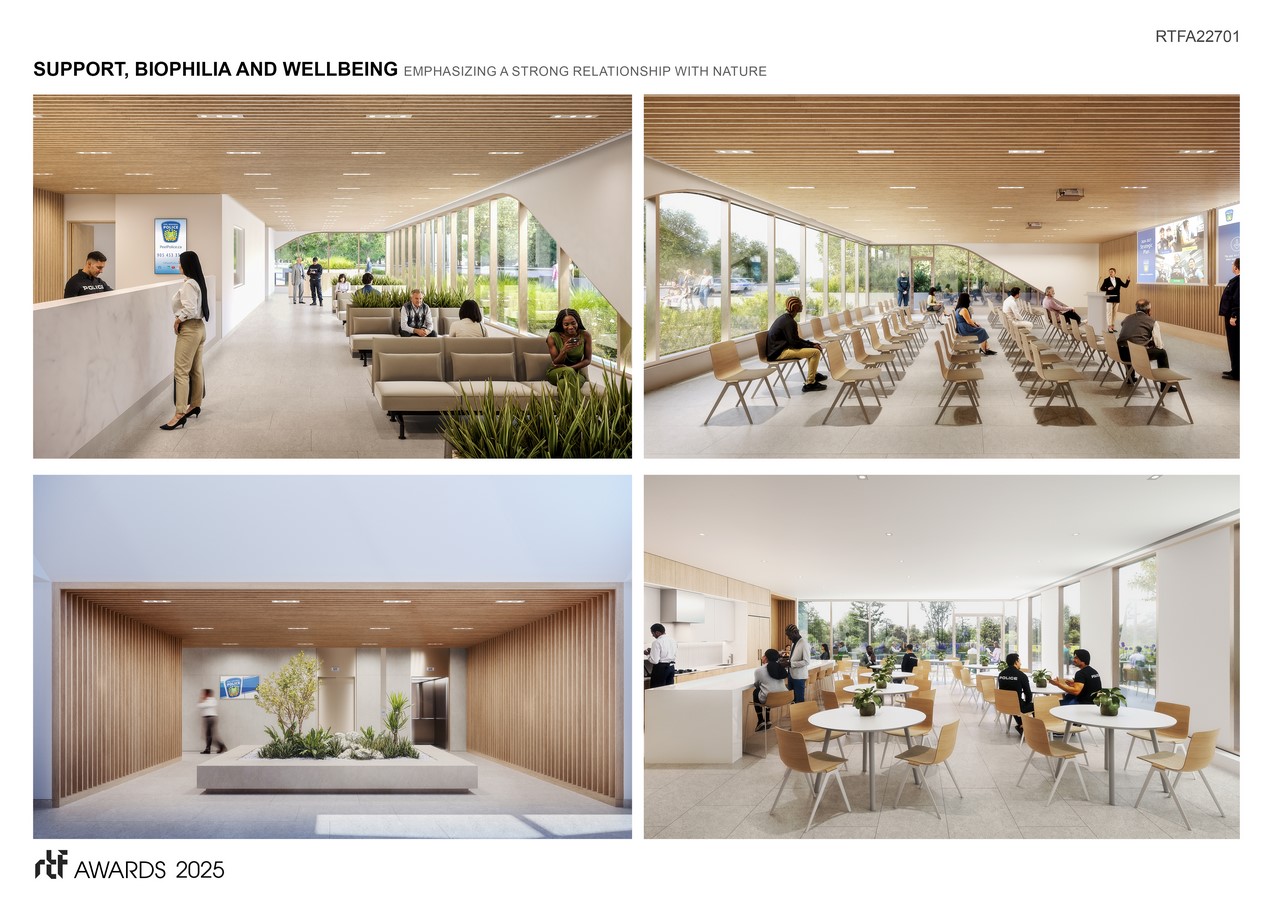
Peel Regional Police’s 23 Division is a powerful example of what the future of public safety can be: operationally excellent, socially inclusive, and environmentally responsible. Through its architecture, it embodies the values of care, accountability, and sustainability at every level.

